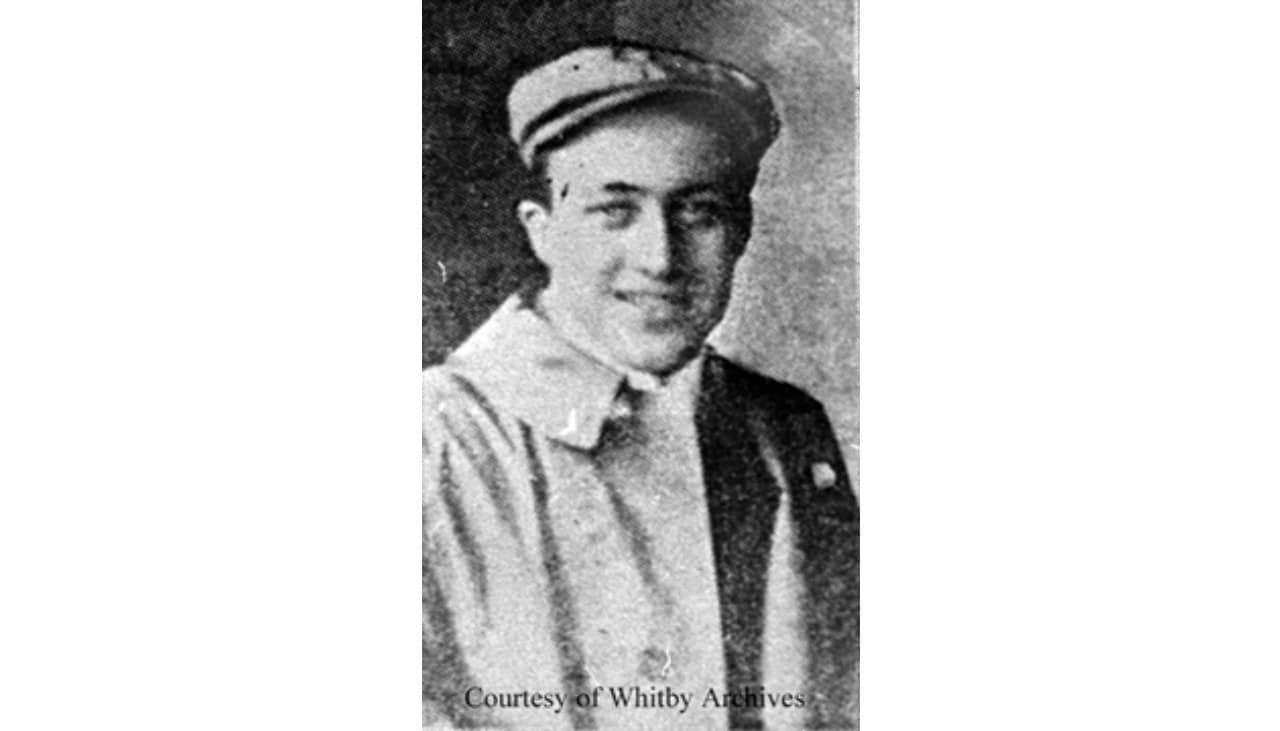An unsolved murder nears 110th anniversary in Whitby
Published November 20, 2024 at 1:01 pm

One of the oldest unsolved murders in Durham Region, the mysterious death of 21-year-old telegraph operator William Stone Jr. at Whitby Junction, is nearing its 110th anniversary.
The Whitby Junction train station opened in 1903 to connect Whitby to the Toronto-Montreal Grand Trunk Railway, replacing an older pre-Confederation station. The station initially sat at the end of Byron Street and, by 1912, saw 12 trains pass by every day.
In August 1914, Britain pulled Canada into the First World War. The Whitby Psychiatric Hospital (now Ontario Shores) near the station later became a recovery hospital for wounded veterans returning from the War, and the station became their drop-off point.
At the time, telegraph wire ran alongside train tracks often making the station a local communications hub. The telegraph network allowed trains to coordinate their arrivals and movements.
The operators’ responsibilities included recording the arrival and departure times, sharing these messages, and recording any telegrams that came in. During this period, the position was considered a very good, stable job with union representation from the Order of Telegraph Operators in the United States and Canada.
On Dec. 11, 1914, Stone was performing these duties on the night shift. Stone was born and raised in Whitby and was known as a “genial young man and very popular,” according to a contemporary news report in the wake of his death. According to reports, Stone lived with his parents not far from the station and was one of their primary breadwinners.
“Stone was of a fearless nature and was accustomed to staying in the station alone without any weapons,” the report continued, “It is contrary to the rule to allow persons to stay in the station overnight and Stone always ejected tramps without showing any concern or fear of danger.”
Shortly after midnight a gunshot rang out in the station. Stone survived long enough to call the Bell telephone operator in Belleville to report he’d been shot. The operator asked Stone if he knew who the shooter was but Stone replied that he did not.
Tragically, Stone succumbed to his injury before help arrived at the station. An autopsy the next day found the bullet had entered Stone between his fourth and fifth rib. It penetrated the left ventricle of his heart and lodged itself in his lung.
The autopsy concluded the shot was level and went straight into Stone. It was also fired from a distance as the autopsy found no power burns on Stone’s clothes. The round came from a .38 calibre revolver. No weapon was found at the scene and the leading theory was that the shooter discarded the gun in one of the numerous nearby creeks.
Investigators did discover a bloody handprint at the scene though Stone’s hands were clean. Stone’s body was still at the telephone when officers arrived. He was lying on his back “as if he had fallen right back from where he was standing at the desk.” The phone was hanging by its cord as though it fell from his hand.
However, the rest of the station was untouched. No money had been stolen from the cash drawer. The waiting room door was still locked and the glass window to the ticket booth was closed. The only thing disturbed was Stone’s body. His pockets were empty, even of the watch essential to his duties, indicating the shooter had searched him.
The lack of an obvious motive leads to a wide net of suspicion. The reports at the time noted, “The neighbourhood has been particularly bothered with tramps of late, no doubt owing to the time of depression.”
A formal inquest began in January 1915 but all leads soon proved useless. At the time, the newly formed OPP investigates serious crimes of this nature. By the time of Stone’s death, the OPP was only about five years old and employed only three inspectors for major crimes.
Even Stone’s father William Stone Sr. came under suspicion as well. The leading theory behind Stone Sr.’s guilt was that he’d killed his son for insurance money. Six months after his son’s death the elder Stone took his own life by lying down on the train tracks near the station.
Investigators soon ran out of leads and Stone’s case went cold. His killer has never been identified.
The station eventually closed in the late 1960s and was slated for demolition soon after. A local artist’s collective managed to buy the Station for use as a gallery on condition they move to the other side of the tracks.
They later moved the building again to its current home near Victoria Street and Henry Street. The Station Gallery remains open and often tells Stone’s story.
INdurham's Editorial Standards and Policies




